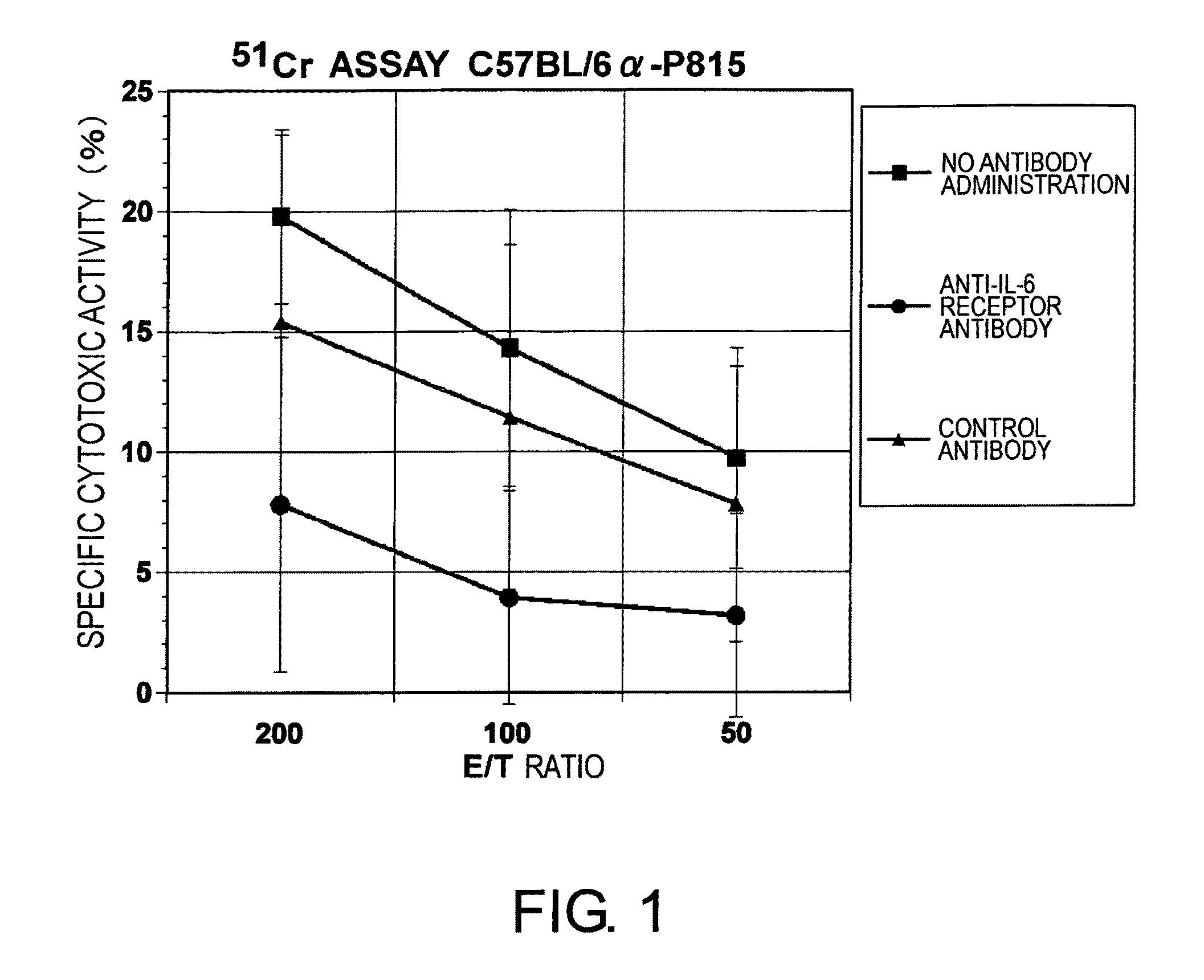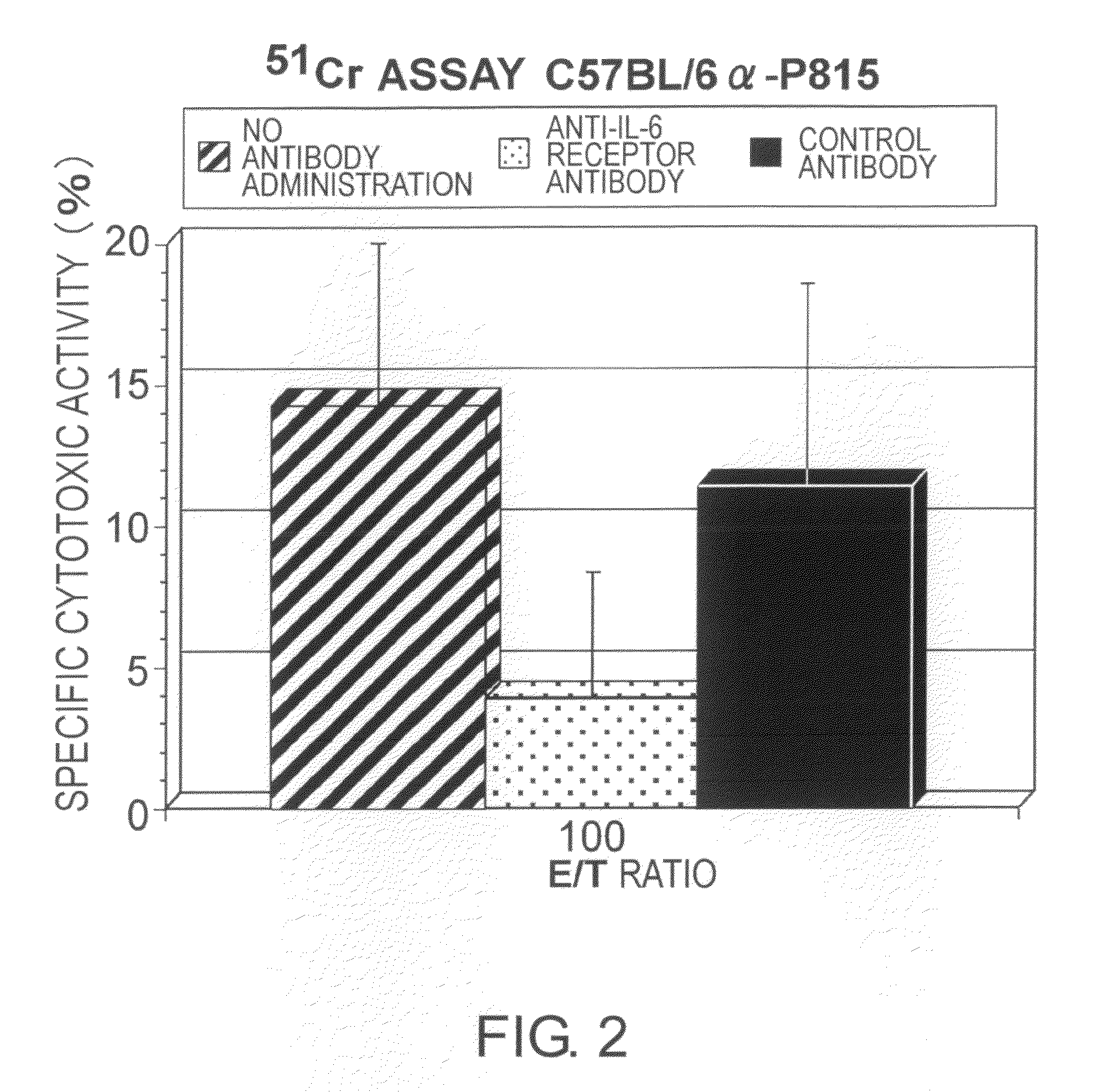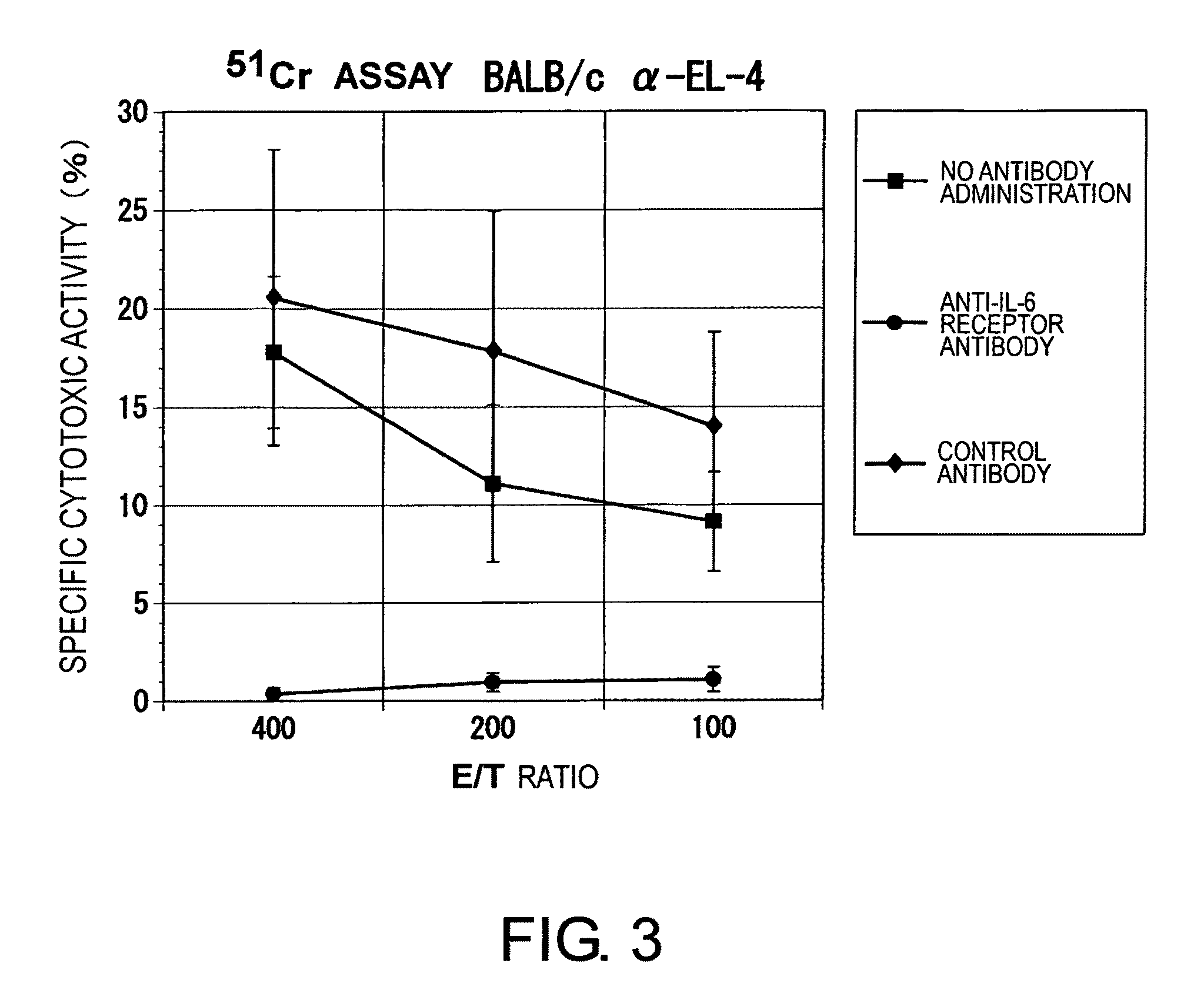Methods for suppressing acute rejection of a heart transplant
a heart transplant and acute rejection technology, applied in the field of agents for suppressing the induction of cytotoxic t cells, can solve the problems of reporting whether or not, and achieve the effects of suppressing acute heart transplant rejection, prolonging the survival of transplanted hearts, and significantly suppressing the infiltration of inflammatory cells into transplanted heart tissues
- Summary
- Abstract
- Description
- Claims
- Application Information
AI Technical Summary
Benefits of technology
Problems solved by technology
Method used
Image
Examples
example 1
Analysis of the Effect of Anti-IL-6 Receptor Antibody Administration on CTL Activity Against Cells of the Mastocytoma Line P815
[0215]First, 3×107 cells of the mastocytoma line P815 (immunizing cells) were administered intraperitoneally into C57BL / 6 mice. After 13 days, spleens were isolated from the mice and the splenic cells (effector cells) were co-cultured with 51Cr-labeled P815 cells (target cells) at various effector cell / target cell (E / T) ratios to assay the CTL activity against 51Cr-labeled P815.
[0216]CTL activity was assayed by determining the cell lysis rate for each cell sample. Cell lysis rate is expressed as follows:
[(the amount of 51Cr released in an experiment−the amount of spontaneously released 51Cr) / (the total amount of released 51Cr−the amount of spontaneously released 51Cr)]×100.
[0217]Next, 2000 mg and 500 mg of an anti-IL-6 receptor antibody (MR16-1) were intraperitoneally administered four days and one day before isoantigen administration, respectively. Then, fo...
example 2
Analysis of the Effect of Anti-IL-6 Receptor Antibody Administration on CTL Activity Against Cells of the EL4 Lymphoma Cell Line
[0219]By the same procedure as described above, 3×107 cells of the EL4 lymphoma cell line (immunizing cells) were administered intraperitoneally into BALB / c mice. After 13 days, spleens were isolated from the mice and the splenic cells (effector cells) were co-cultured with 51Cr-labeled EL4 cells (target cells) at various effector cell / target cell (E / T) ratios. CTL activity against 51Cr-labeled EL4 was assayed using the same method as described in Example 1. Next, using the same procedure as described in Example 1, 2000 mg and 500 mg of the anti-IL-6 receptor antibody were intraperitoneally administered four days and one day before isoantigen administration, respectively. Then, four and nine days after isoantigen administration, 500 mg of the antibody was administered. CTL activity was determined by the method described above. In addition, under the same tr...
example 3
Assessment of the Effect of Anti-IL-6 Receptor Antibody Administration in a Mouse Model for Acute Heart Transplant Rejection
[0222]The effect of administering an anti-IL-6 receptor antibody (MR16-1) on acute rejection after transplantation was assessed using a mouse model for heart transplantation. The mice used in the experiments were purchased from Japan SLC Inc. and bred at the Division of Laboratory Animal Research, Department of Life Science, Research Center for Human and Environmental Sciences, Shinshu University, according to the center's animal experiment protocol. A mouse model for heterotopic heart transplantation using BALB / c mouse donors and C57BL / 6 mouse recipients, which are allogenic, was prepared by microsurgery using the procedure described below. The donors and recipients used were four- to eight-week-old male mice.
[0223]Both donor and recipient mice were anesthetized by intraperitoneally injecting pentobarbital sodium (Nenbutal(R)) at a dose of 70 mg / kg. The heart ...
PUM
| Property | Measurement | Unit |
|---|---|---|
| molecular weight | aaaaa | aaaaa |
| pH | aaaaa | aaaaa |
| Median survival time | aaaaa | aaaaa |
Abstract
Description
Claims
Application Information
 Login to View More
Login to View More - R&D
- Intellectual Property
- Life Sciences
- Materials
- Tech Scout
- Unparalleled Data Quality
- Higher Quality Content
- 60% Fewer Hallucinations
Browse by: Latest US Patents, China's latest patents, Technical Efficacy Thesaurus, Application Domain, Technology Topic, Popular Technical Reports.
© 2025 PatSnap. All rights reserved.Legal|Privacy policy|Modern Slavery Act Transparency Statement|Sitemap|About US| Contact US: help@patsnap.com



